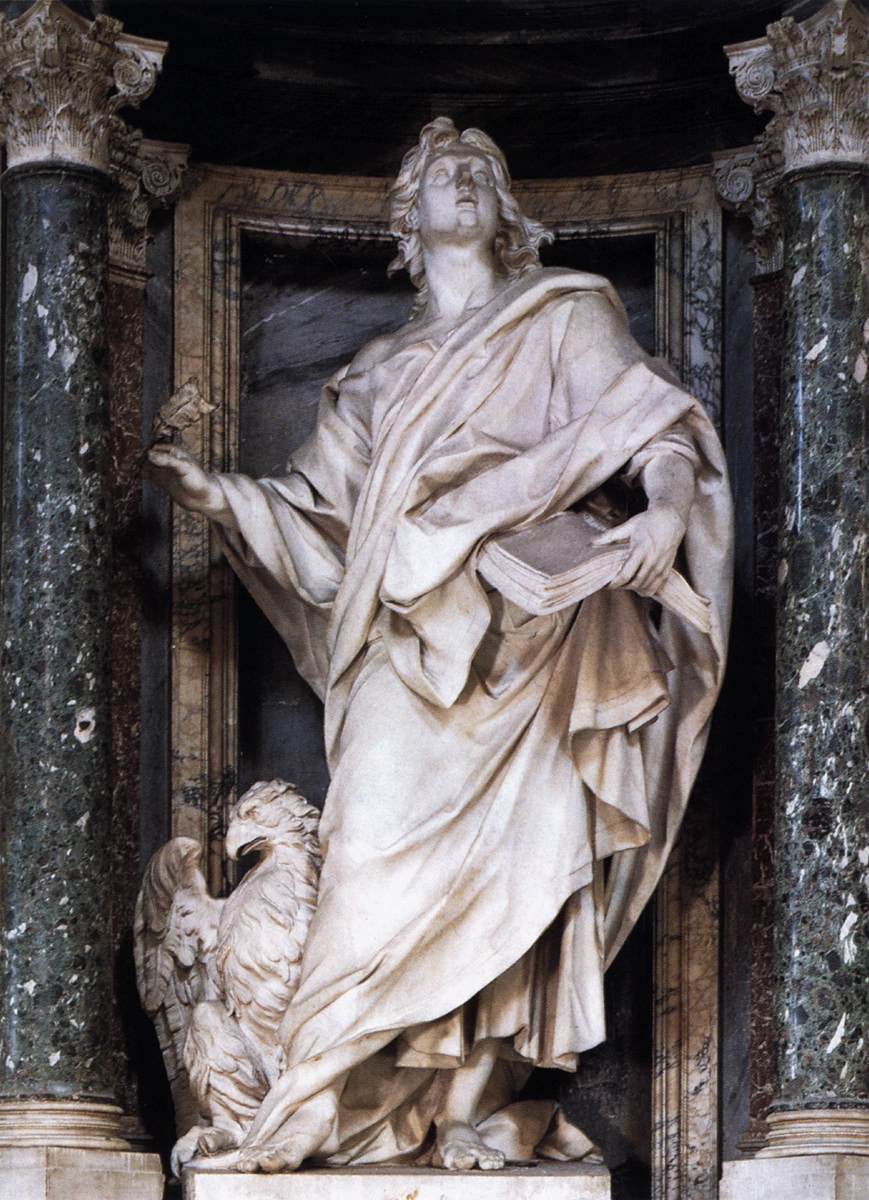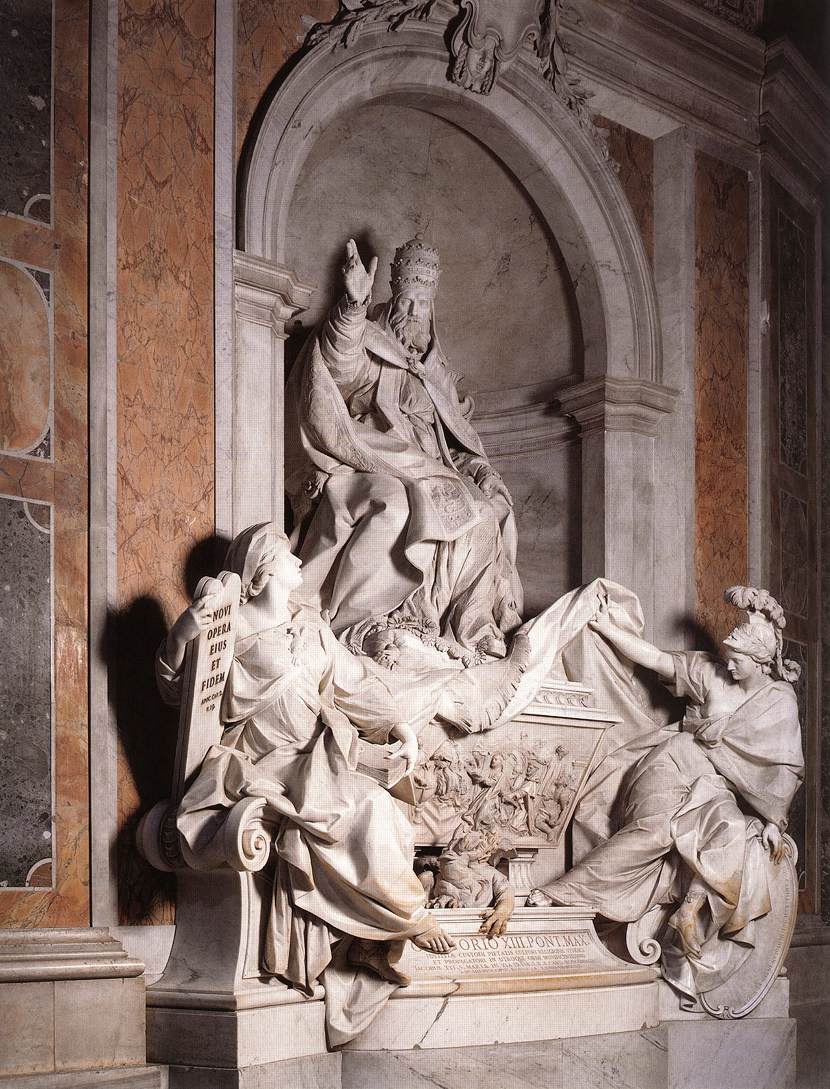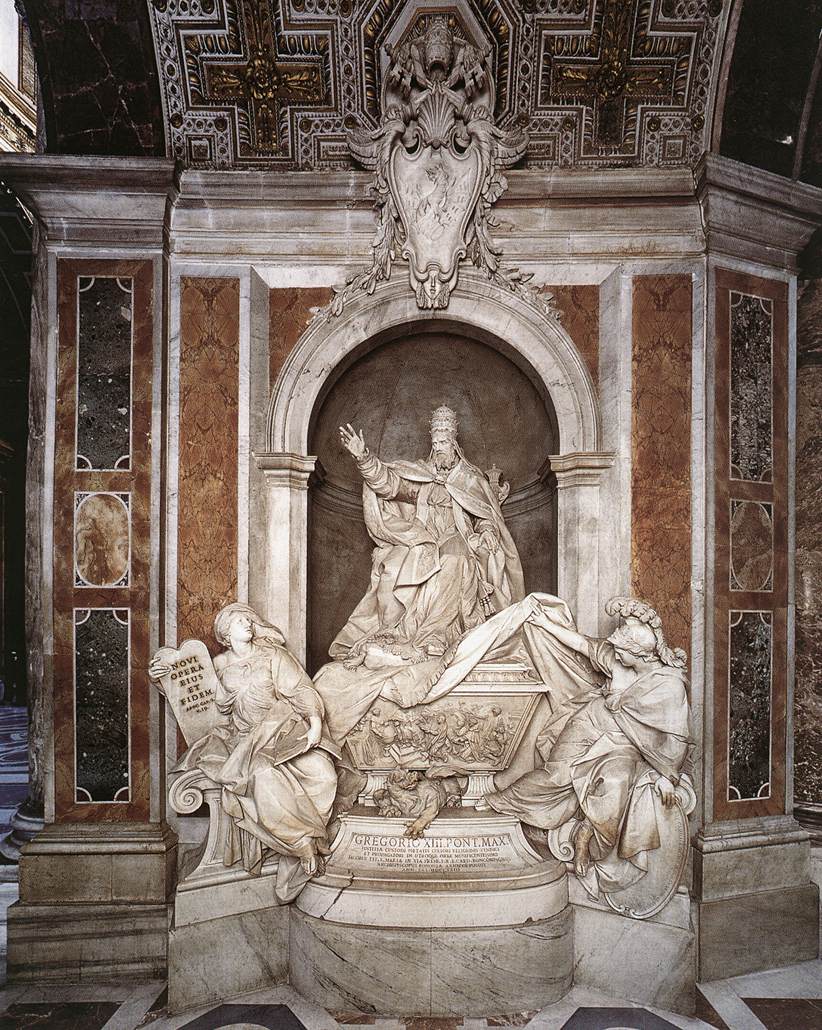By: Amy Fredrickson
Baroque sculptor Camillo Rusconi was born on 14 July 1658 and was an accomplished sculptor in his time. He was included in Lione Pascoli’s 1736 Vite de pittori, scultori, ed architetti moderni, which provides modern scholars with insight into contemporary understandings of his oeuvre.
Rusconi began his training through Lombard sculptor Giuseppe Tusnati, and he relocated to Rome to continue his training during 1685 and 1686. He began working with Ercole Ferrata—a fellow sculptor of the Roman Baroque. He assisted Ferrata with several commissions before Ferrata’s death in 1686.
On his own, Rusconi began executing statues in stucco, a material that was both less expensive and quicker to sculpt than either marble or bronze. During his first few years in Rome, he produced several stucco putti for the Roman churches of San Salvatore in Lauro and Santi Vito e Modesto.
Rusconi’s style attracted prominent commissions, including the plaster allegorical statues of the four virtues for the Ludovisi chapel in the church of Sant ’Ignazio. For this project, the artist sculpted four allegorical figures representing Prudence, Justice, Temperance, and Strength. Still located in their original locations in the Ludovisi Chapel, the figures gaze upon the tomb of Gregory XV.
What contemporaries considered his most important works are four statues of the Apostles in the Basilica di San Giovanni in Laterano (1708-1718) and the tomb of Pope Gregory XIII (1719-1725) in Saint Peter’s Cathedral in Rome. His sepulchral monument represents a synthesis between the classical and baroque styles of artists Alessandro Algardi and Gian Lorenzo Bernini.
Rusconi’s style incorporated elements of the Baroque and Neoclassical periods. In fact, much of his style is similar to Bernini, yet more subdued through his incorporation of neoclassicism. Rusconi trained several pupils including Pietro Bracci, Giovanni Battista Maini, and Filippo della Valle.
As evidenced through Lione Pascoli’s account of Rusconi’s biography, the artist also attracted English patronage from the Grand Tour. English patrons commissioned copies of famous works, such as the Apollo Belvedere. Rusconi was named principe of the Accademia di San Luca in 1727, and he died one year later on 8 December 1728.
Images:
Saint James the Great, 1715-18, Marble, height 425 cm. San Giovanni in Laterano, Rome.
Saint John the Evangelist, 1715-18, Marble, height 425 cm. San Giovanni in Laterano, Rome.
Tomb of Gregory XIII, 1719-25, Marble. Basilica di San Pietro, Vatican.
Apostle St Matthew, 1708-18, Marble. San Giovanni in Laterano, Rome.
Fortitude, 1685-86, Stucco. Ludovisi Chapel, Sant’Ignazio, Rome.
Saint Andrew, 1708-09, Marble, height 425 cm. San Giovanni in Laterano, Rome.
Tomb of Gregory XIII, 1719-25, Marble. Basilica di San Pietro, Vatican.
Bibliography:
Enggass, Robert, “Rusconi and Raggi in Sant’ Ignazio,” The Burlington Magazine, Vol. 116, No. 854 (1974), pp. 258-263.
Rusconi, Camillo in “Enciclopedia Italiana.” 2018. Treccani.It. http://www.treccani.it/enciclopedia/camillo-rusconi_%28Enciclopedia-Italiana%29/.
Sicca, Cinzia and Alison Yarrington, eds. The Lustrous Trade: Material Culture and the History of Sculpture in England and Italy, c. 1700-c. 1860, (Leicester University Press: London, 2000).
Further Reading:
Garstang, Donald, “Sir Robert Taylor and Camillo Rusconi: The Source of ‘Britannia’ on the Cornewall Monument in Westminster Abbey,” The Burlington Magazine, Vol. 145, No. 1209, (2003), pp. 851-853.







